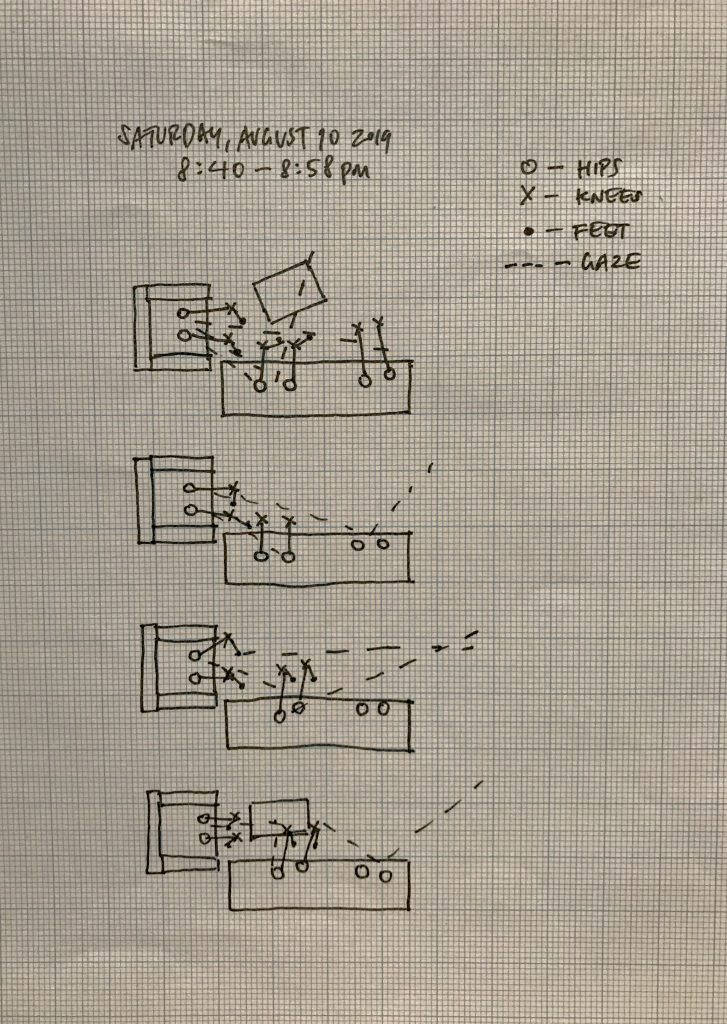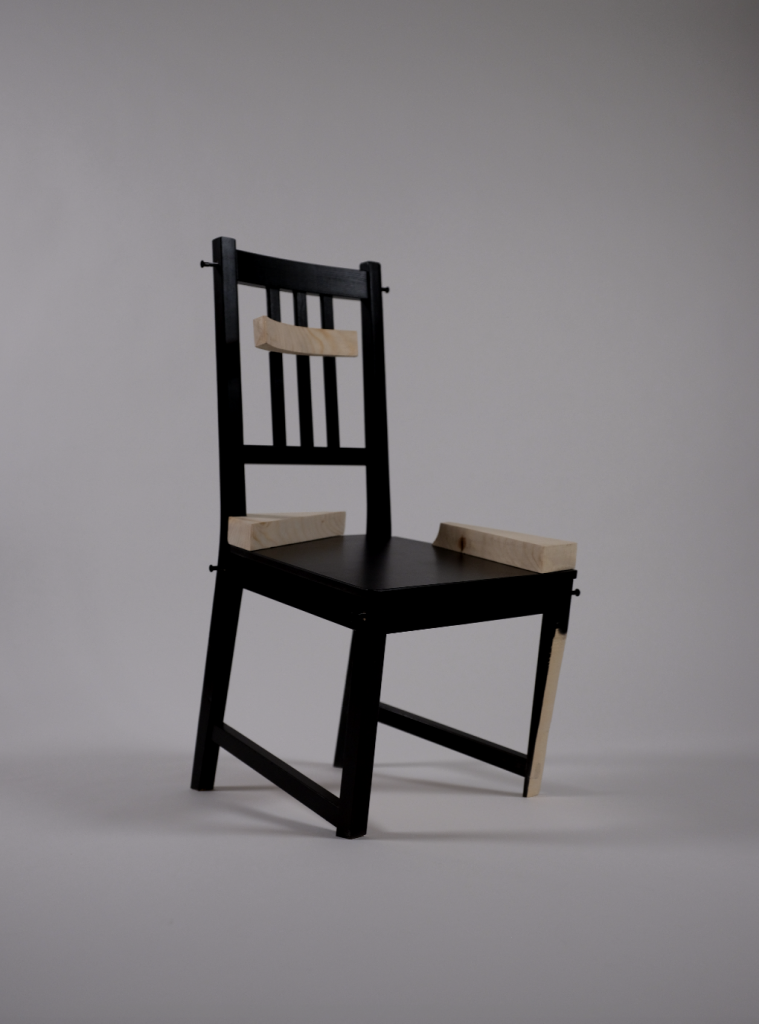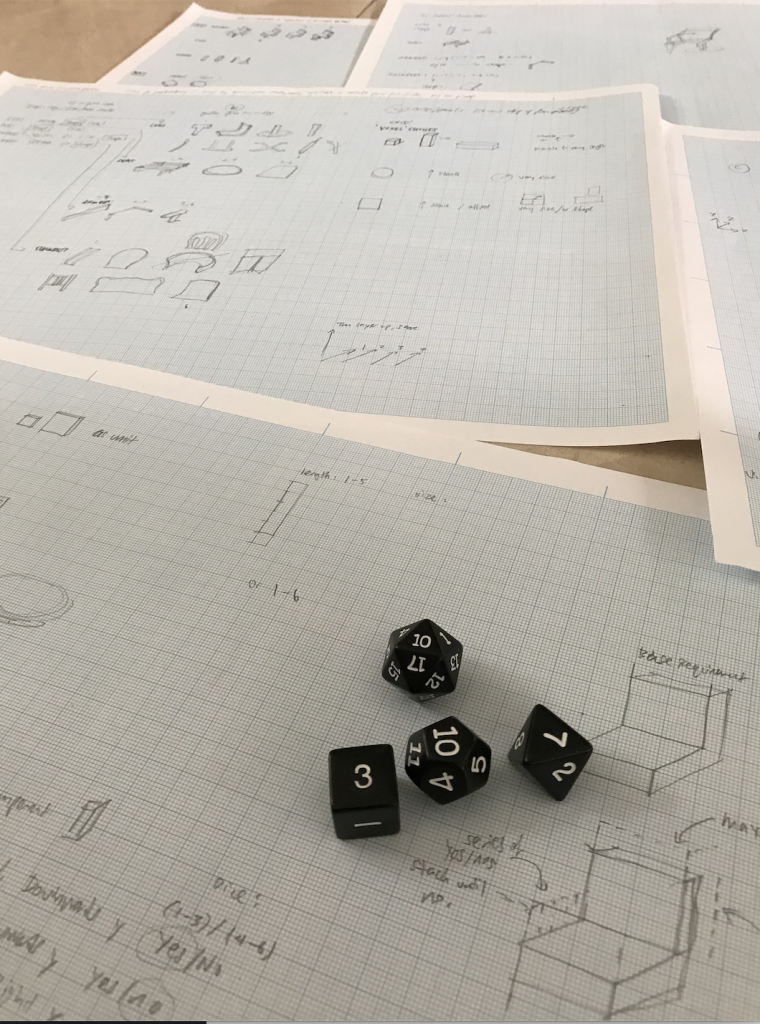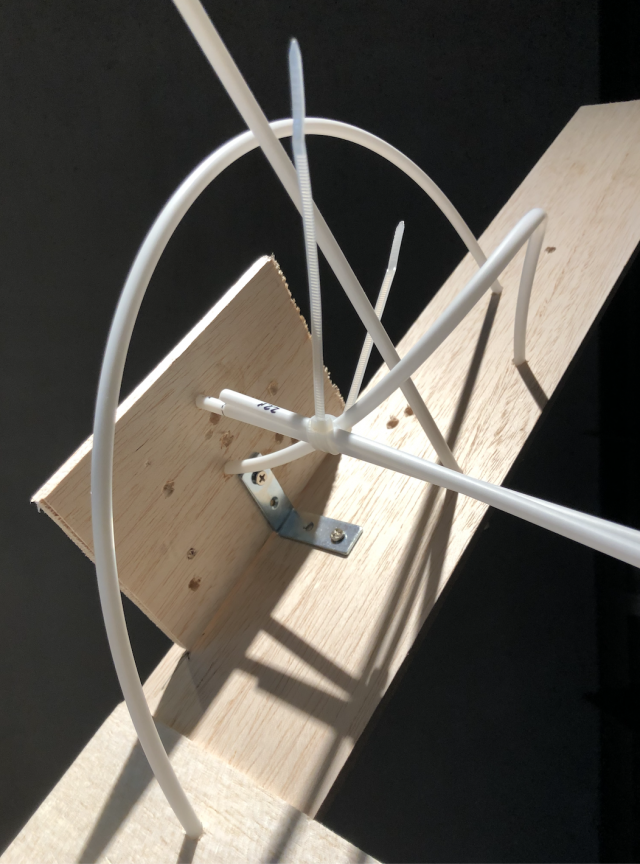I have spent the past month investigating different ways of using scores as a way to ‘source’ designs from existing everyday activities that I observe, or to enable the creation of a design by the use of chance operations.
My first step in the process was creating a ‘chance-operation object’, in which different parameters (size, material, number of joints) were chosen randomly from a list of numbers and specifications and then fabricated. It was a fun test, but somewhat predictably, I found that the object that resulted had no function and was more of a sculpture than a ‘useful’ object.
This was created from a table with parameters for dimensions (height, width, length), number of parts, joints, and curves. The results were chosen from a range of feasible options and were drawn out of a hat.
After this test, I chose the chair as an object with a particular function, and began investigating places in which I could find and write down existing events that happen on chairs (people sitting on dining table chairs eating, driving, working at a desk, having a conversating) that I could transpose into new chair designs, as well as ways that I could generate my own scores for the creation of a chair.
In this way, the chair serves as the main parameter or ‘genre’ (in music terms, think a score for a 5-minute piano solo vs a symphony) for the scores that I create and collect. As an object of manageable size for fabrication, the chair also enables me to test my resulting designs and use the findings or resulting events of those tests as another score for another chair.
‘Collected’ Scores


‘Created’ Scores
Using a similar method to the first chance-operation sculpture I had made, I’ve also devised various systems for making chairs with chance. I’ve chosen one of the results to fabricate, and am making it this week.

My investigations have also taken me to generative, computational, and parametric design. The applications of these methods of design are wide-ranging, including that of minimizing material, weight, reduction of stress and fatigue.
